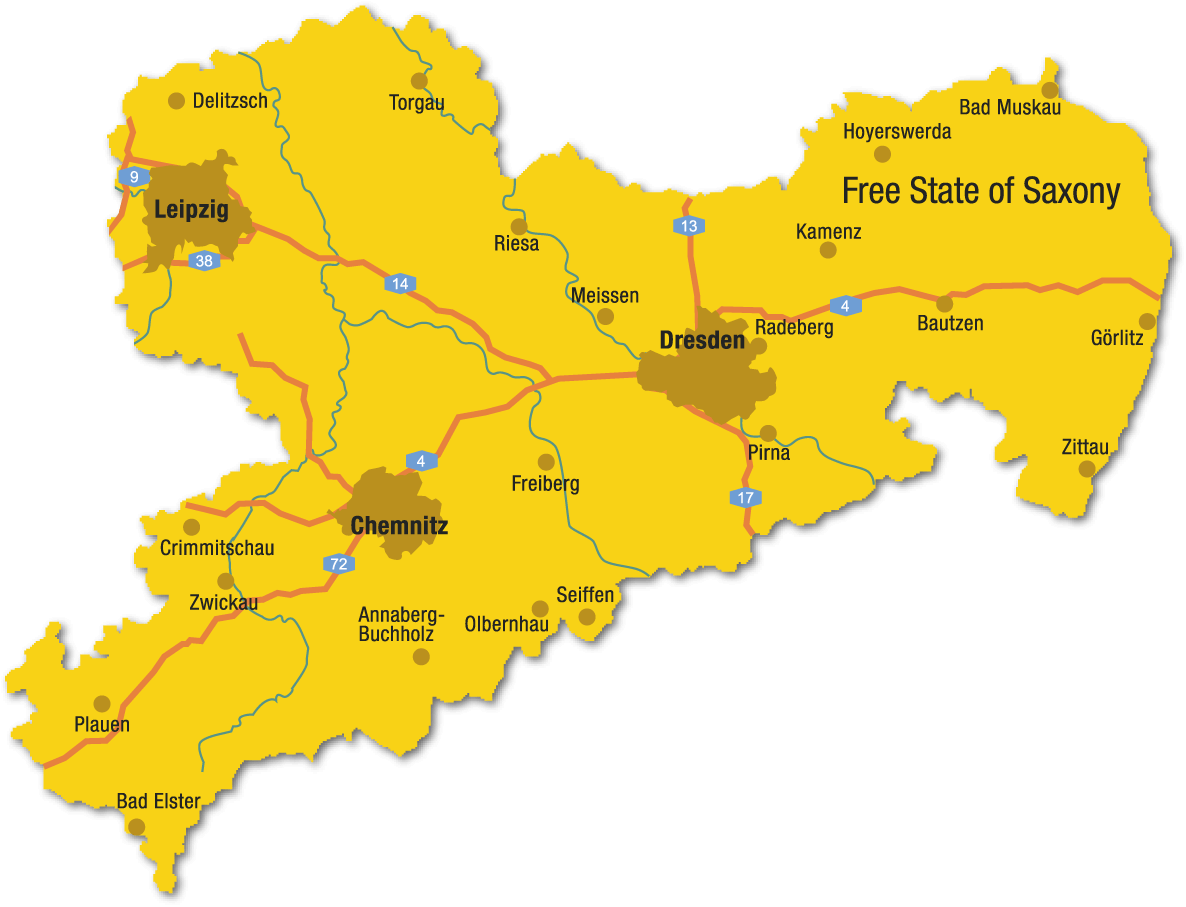The Dresden Grand Garden
The Grand Garden Dresden
The Grand Garden is a masterpiece of landscaping art. Be enchanted by its imposing vistas and have a look together with Friedrich Bouché, the winged Chronos and Emma into the history since the garden’s origin.
The Dresden Zwinger
The Dresden Zwinger
The Dresden Zwinger was created by order of Augustus the Strong and is one of the most impressive examples of Baroque architecture. Join architect Matthaeus Daniel Poeppelmann, court gardener Carl August Seidel and Emma and embark on a discovery tour of the Baroque building complex.
Wackerbarth Castle
Wackerbarth Castle
At the feet of the Radebeul vineyards before the gates of Dresden lies Wackerbarth Castle. This is where the Saxon court once celebrated inebriating festivities. Meet its principal builder August Christoph Imperial Count von Wackerbarth and his greatgrandnephew to explore the castle garden and the vineyards together with Emma and the two previous owners of the castle.
Altzella Monastery Park
Altzella Monastery Park
Around the year 1800 the landscape gardener Johann Gottfried Huebler created a romantic landscape park on the grounds of the former Cistercian monastery. Step into the history of the monastery park and hear about the famous painter Caspar David Friedrich, who was inspired by the ruins in the park.
Royal Grounds Bad Elster
Royal Grounds Bad Elster
The history of the mineral springs in Bad Elster goes back to the 17. century. Back then Duke Maurice of Saxe-Zeitz ordered a batch of bottles for his wife. Accompany Emma and the Garden Director Paul Schindel through the Royal Grounds Bad Elster and listen to the story how Bad Elster became the Royal Saxon State Spa.
Grosssedlitz Baroque Garden
Grosssedlitz Baroque Garden
Why is there no water in the “Stony Sea”? How many orange trees did Augustus the Strong have in his collection and how many orange trees are there today? There is many a riddle to be solved in the Grosssedlitz Baroque Garden. The pleasure and flower gardener Johann Christoff Erdmann invites you to discover the secrets of the baroque park.
Lichtenwalde Park
Lichtenwalde Park
At the beginning of the 18. century the Imperial Count von Watzdorf created the Lichtenwalde Park high above the valley of the river Zschopau. More than 100 water fountains show the playfulness of rokoko. Follow Count von Watzdorf and the landscape architect Hermann Schüttauf through the terraced park and enjoy breathtaking views.
Pillnitz Park
Pillnitz Park
Do you want to know, why the Pillnitz Camellia is so famous? Or why the baroque palace is also called “Indian Pleasure Castle”? Let King Frederick Augustus I. show you round his garden and discover the variety of exotic plans in the Pillnitz Park.
Zabeltitz Baroque Garden
Zabeltitz Baroque Garden
1728 Count von Wackerbarth was awarded the Good Zabeltitz as a gift from Augustus the Strong. During the following years he and his court architect Johann Christoph Knoeffel created a magnificent baroque garden with avenues, pleasure grounds and an ingenious system of ponds. We invite you to follow the Imperial Count in his stroll through the gardens and listen to the stories of a true Saxon princess.
Moritzburg Castle & Pheasant Castle Moritzburg
Moritzburg Castle & Pheasant Castle Moritzburg
Surrounded by extensive ponds and parks you can find the baroque hunting lodge of Augustus the Strong. Here he indulged not only his passion for hunting, but also his passion for collecting: in the adjacent Friedewald menageries should be built to house his exotic animals. As such, also the site of the pheasant breeding was created, which was later expanded by the construction of the Pheasant Castle Moritzburg. Explore the Moritzburger cultural landscape and let Camillo Graf Marcolini initiate you into the secrets of pheasant breeding.
Stolpen Castle
Stolpen Castle
Anna Constantia Countess von Cosel, for many years mistress of elector Augustus the Strong, was imprisoned for almost 50 years in the Castle Stolpen. Major von Wehlen, fortress commander at the castle Stolpen in the early 18th century, reports from life in the castle and the famous and beautiful, but also egocentric prisoner. Dive into the castle's history and listen to his numerous anecdotes.















